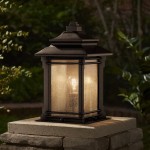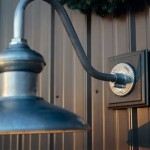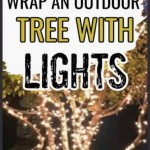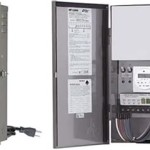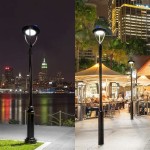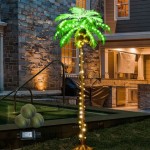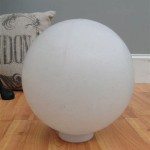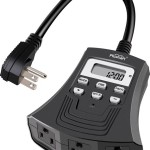What Size Cable To Use For Outdoor Lighting
When it comes to outdoor lighting, choosing the right size cable is essential for safety and performance. Using a cable that is too small can lead to voltage drop, overheating, and even fire hazards. On the other hand, using a cable that is too large can be costly and unnecessary. In this article, we'll explore the factors to consider when selecting the right size cable for your outdoor lighting needs.
Factors to Consider:
1. Amperage: The amperage of the lighting system determines the minimum size cable required. Amperage is the amount of electrical current flowing through the circuit, and it is measured in amps. To determine the amperage, add up the wattage of all the lights in the system and divide by the voltage. For example, if you have a system with six 50-watt lights, the total wattage is 300 watts. If the voltage is 120 volts, the amperage is 300 watts / 120 volts = 2.5 amps.
2. Voltage Drop: Voltage drop is the loss of voltage that occurs as electricity travels through a cable. The longer the cable and the higher the amperage, the greater the voltage drop. To minimize voltage drop, use a cable with a larger cross-sectional area. The cross-sectional area is measured in square millimeters (mm²), and it indicates the amount of copper or aluminum in the cable.
3. Distance: The distance from the power source to the lights affects the size of cable required. The longer the distance, the greater the voltage drop. For long distances, use a cable with a larger cross-sectional area to compensate for the increased voltage drop.
4. Burial Depth: If the cable is buried underground, the burial depth can affect the size required. Cables buried at shallow depths are more susceptible to damage from digging or other activities. To protect the cable, use a cable with a thicker insulation or a protective conduit.
Cable Sizes:
The following table provides recommended cable sizes for outdoor lighting based on amperage and distance:
| Amperage | Distance | Cable Size | |---|---|---| | Up to 5 amps | Up to 50 feet | 14 AWG | | 5 to 10 amps | Up to 100 feet | 12 AWG | | 10 to 15 amps | Up to 150 feet | 10 AWG | | 15 to 20 amps | Up to 200 feet | 8 AWG |Note: These recommendations are for general guidance only. Consult a qualified electrician for specific cable sizing recommendations based on your actual system requirements.
Safety Precautions:
When working with outdoor lighting cables, it is important to follow these safety precautions:
- Always use a certified electrician for installation and maintenance.
- Use weatherproof cables and connectors designed for outdoor use.
- Install cables underground or in protective conduits to protect them from damage.
- Follow all local building codes and regulations.
- Never exceed the maximum amperage rating of the cable.
By following these guidelines, you can ensure that your outdoor lighting system is safe, efficient, and reliable.

Lumena 12v Cable Reel 2 Core 1 5mm

Low Voltage Landscape Wire Outdoor Cable For Light Diffe Size

16 2 Low Voltage Landscape Lighting Wire Copper Conductor Cable

100 Foot Long Landscape Lighting Cable At Com

Low Voltage Led Deck Lights Kit Φ1 18 Waterproof Recessed Lamp O Fvtled

12 2 Low Voltage Wire Outdoor Landscape Lighting Cable 200 Feet

Slr100 Rgbw Color Changing Smart Outdoor String Lights Kings Lighting

Southwire 12 Gauge Low Voltage Cable Hartville Hardware

Gardenreet Brass Pathway Lights Black Low Voltage Led Landscape Path 12v Outdoor Waterproof Lighting Hat For Walkway Driveway Garden Yard Without G4 Bulb Com
-700x700.jpeg?strip=all)
Full Copper Wire 10m Weatherproof Outdoor Festoon String Lights Black Cable For Event Lighting Decorations
Related Posts
